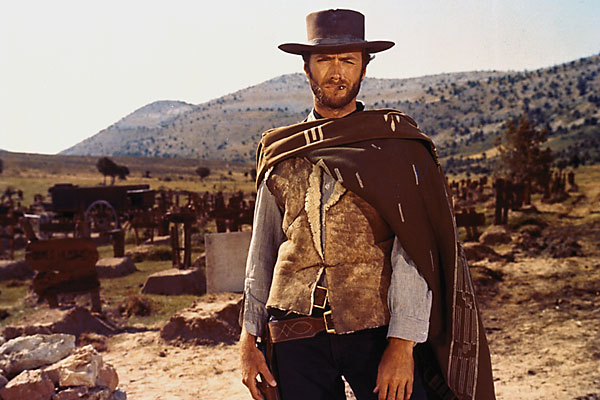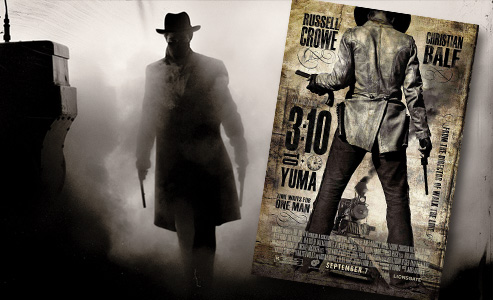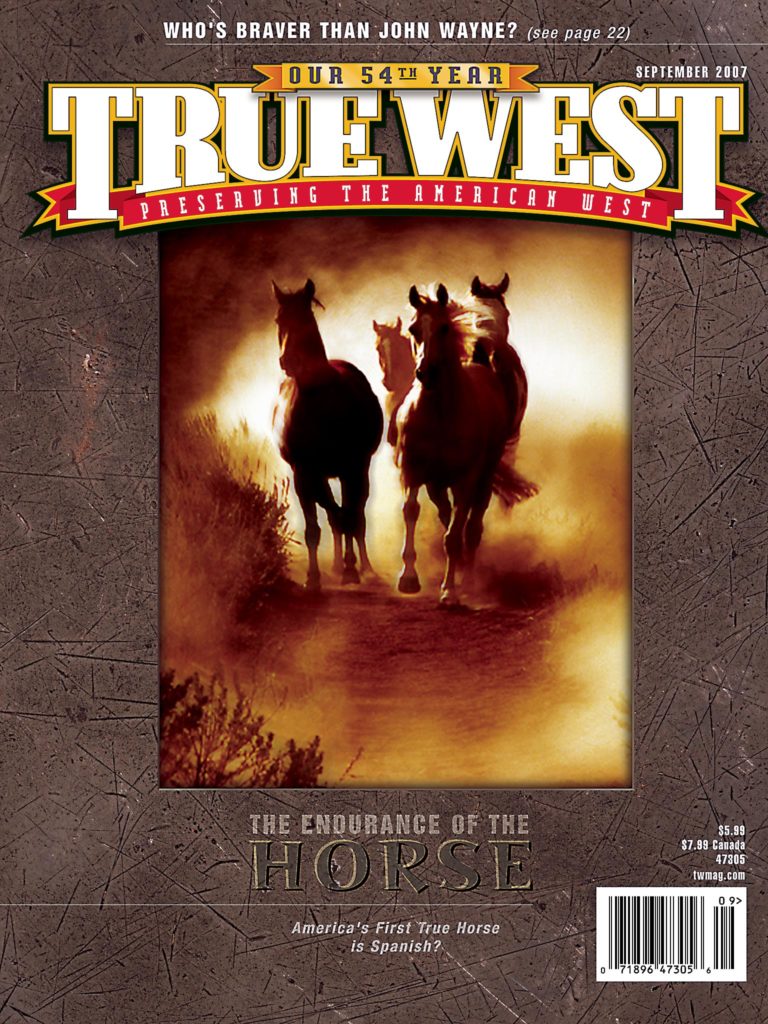 If anybody needs convincing that the boomers still wield considerable cultural and economic clout, consider this: The Beatles still rule, as evidenced by Love, Cirque Du Soleil’s Vegas extravaganza, as well as the new Paul McCartney CD.
If anybody needs convincing that the boomers still wield considerable cultural and economic clout, consider this: The Beatles still rule, as evidenced by Love, Cirque Du Soleil’s Vegas extravaganza, as well as the new Paul McCartney CD.
At the same time, James Bond has been successfully reborn in Casino Royale, his sixth incarnation, the Kennedy assassination conspiracy ball is still in play, the Marvel Universe of the early 1960s is dominating the box office with Spidey 3 and Fantastic Four 2, and the 40-year anniversary of the Summer of Love is the talk of the season.
In that same ‘60s package is the new Sergio Leone Anthology (MGM; $89.98), which joins to the already existing special edition of The Good, The Bad, and The Ugly (1966) brand new double discs with bells-and-whistles versions of A Fistful of Dollars (1964), For a Few Dollars More (1965) and, for the first time, what appears to be the definitive and completely reconstructed and restored Duck, You Sucker a.k.a. A Fistful of Dynamite (1971). Combined with the deluge of John Wayne product this year (see p. 49), the Leone material makes 2007 a year to remember for Western fans.
More important, the people responsible for producing this collection have obviously been given a considerable budget for producing bonus material, which is the name of the game when it comes to this sort of thing. The discs feature full documentaries, restoration materials, interviews with Clint Eastwood (from 2003) and interviews with principal players in the production and writing of the films. Best of all of these extras are the absolutely brilliant commentaries by Sir Christopher Frayling on three of the films—equivalent to a full course in the history, inspiration and minutiae of these unique pictures. You’ll even find some haunting revisits and photographic comparisons to the original places and sets the pictures were shot. This is the motherlode.
One can examine these movies as intriguing relics, dissecting in any number of ways their place in cinema history and the Western genre (Italian film specifically), and the inspired genius of one very important iconoclastic filmmaker (Sergio Leone) and the other inductees in what amounts to a full blown cinematic movement, contained fairly neatly in a single decade (1964-74).
The influence of these movies can be seen everywhere—even Quentin Tarantino, an avowed Spaghetti Western buff (see opposite page), stole visual motifs and bits of Ennio Morricone’s music, which is arguably as important as Leone’s direction, for his Kill Bill movies. In fact, as we see, and not just in the collection at hand, the Spaghetti Western is undergoing an amazing rebirth both domestically and in markets as far away as Japan and Thailand.
In that same vein, the three Eastwood films in the package can justifiably be seen as the singular birth of the career of one of the 20th century’s most important talents, as actor, director and producer. I don’t think that anybody would deny that the “Man With No Name” films, as they were marketed here, moved Eastwood from the back alleys of TV (Rawhide) to the front row of all-time movie icons. Eastwood is the John Wayne (and the anti-Wayne) of a subsequent generation. While his ambition and intelligence might have taken him in interesting directions regardless, it may also be true that had A Fistful of Dollars flopped, the history of American film as we know it would have been radically reconfigured.
Eastwood’s character in the Leone films was a springboard for nearly all of the actor’s performances in the next couple of decades—he was either reprising the character or bouncing off of it. His work with Director Don Siegel as far back as Coogan’s Bluff (1968) was Eastwood’s postgraduate degree as a filmmaker and icon. It’s fair to say that the popularity of the Leone films is not only what made him an international star, it made him bankable enough for directors like Siegel to launch films such as Dirty Harry (1971).
Despite the overall significance of the Leone movies in this collection, there’s this to remember: For kids in the 1960s living in the wake of the Bond phenomenon, Eastwood, like Sean Connery, gave to them another tough-as-nails hero who spit out one-liners the same way his gun spit out lead. True, the Eastwood/Leone films didn’t feature any women in strong parts, but audiences didn’t care all that much.
Few thrills felt as great as rounding up a gaggle of pals and locking down in the theater seats to see these films. We didn’t need our dads for this—these were our Westerns, and we knew immediately that they took all the traditional elements that came from TV and the Wayne pictures, and managed to blow up all the cool stuff to epic proportions in some kind of supersaturated, minimalist style, complete with the twang of Rock ‘n’ Roll.
We also knew that the films possessed a mocking edge, an overseas raspberry directed at the dreary moralistic Westerns we saw every day. This was the Western as subculture, as antidote and as rebellion, in a decade in which all of these elements would come to play in grand scale.
In his New Biographical Dictionary of Film, film critic David Thomson says of Leone, “I think Leone really despised the Western, and let the smart mockery exploit his remarkable eye.”
His words ring true to some degree, but as a young audience, we could mock the creaky Oaters we grew up on even while, in that great ambiguity of post-pubescence, we loved them too, and what they meant as a link to our fathers—to our pasts and to theirs.
When the Stones and the Beatles talked to us in a language only we could hear, so too these great, vivid, murderous films helped us define ourselves in newer ways.
It should be mentioned that Duck, You Sucker, in its full, complex glory, is a little like finding a complete alternative epic version of The White Album. It’s a revelation, and Sir Frayling is more than equal to the task of giving the definitive lecture on the picture. Even if you have the Eastwood films on the shelf, the new prints and sound, the bonus material, the premiere of Duck, You Sucker and the narration make this box worth buying.
All four titles are priced individually at $26.98 each or available as part of The Sergio Leone Anthology box set, which retails at $89.98.
Return of the Spaghetti Western?
Quentin Tarantino, who often talks of his desire to work in the genre, recently announced to Britain’s Telegraph newspaper that he wants to make a Spaghetti-style Western, but a film set in the South. “I want to explore something that really hasn’t been done,” he told the paper. “I want to do movies that deal with America’s horrible past with slavery and stuff but do them like Spaghetti Westerns, not like big issue movies. I want to do them like they’re genre films.”
Tarantino will also be hosting “The Secret History of Italian Cinema 4: Spaghetti Westerns” at the 64th Venice Film Festival held August 29-September 8. He’ll be screening 40 films: the familiar, the obscure and the ugly. It’s likely to be a star-studded affair, especially if you consider directors, technicians and stuntmen to be stars. An actor or two may even show up.
More Pasta
Along those same lines, Spaghetti Western star Franco Nero (Django) has apparently secured German financing for his return to the Wild Wild West of Spain, where many of the best Italian Westerns were shot. In a recent interview Nero said, “At the moment there is a temporary title, The Implacable Ones, that appeals to the director, even if I prefer The Angel, The Brute, and The Sage.” He added, “The Western is a film genre that I love a lot, and I miss it.”
Spaghetti Toss-Up
The movie Bamako takes its name from the capital of Mali, where it was made. It’s about a dissolving marriage, the practices of the World Bank, which is put on mock trial, and a few dozen other things. But Danny Glover, who coproduced the picture, has tossed a brief Spaghetti Western, called “Death in Timbukto,” into the middle of the film. Glover stars in the film-within-a-film as Cow-Boy. Actually just about every character in the Western segment is named Cow-Boy. This picture is highly acclaimed on the international festival circuit and will likely be available on DVD before the end of the year.
AND A SIDE OF LINGUINE
News is leaking out about yet another Western with Italian DNA called Hired Guns, which will be written and produced by Sergio Donati, who cowrote Leone’s Once Upon a Time in the West. More on that as it trickles in.
Pasta Morbida
They’re calling it the European Vacation, and what Starz/Encore Westerns means by that is that they intend to run a 48-hour marathon of Westerns produced or shot on the other side of the Atlantic. As one might imagine, we’re talking about, you guessed it, Spaghetti Westerns (mostly). The series makes a nice antipasta to the Leone DVD collection, so set your calendars for Saturday and Sunday, July 28-29, pour yourself a huge goblet of cheap Chianti and get your TIVO’s hummin’. Besides showing the best known Leone films, it also offers:
• My Name is Nobody (Henry Fonda, Terence Hill)
• Sabata (Lee Van Cleef)
• God Forgives, I Don’t! (Terence Hill, Bud Spencer)
• The Big Gundown (Lee Van Cleef) and
• Ulzana’s Raid (Burt Lancaster)
In the Works
Silver Bulletin
By the time this item sees print, the rumor will probably either be confirmed or debunked, but after the third Pirates of the Caribbean film opened to huge numbers, word has come in that Pirates’ creators Gore Verbinski, Terry Rossio and Ted Elliot are considering a revised Lone Ranger movie. If this is true, it will be interesting to see how screenwriters Rossio and Elliot work the material, especially since they played a major role in creating the two Antonio Banderas Zorro films.
One thing is certain, if the film gets made, it’s unlikely that Klinton Spilsbury, the star of the disastrous 1981 film The Legend of the Lone Ranger, will be asked to do a cameo. In fact, he neither acted before, or after, donning the famous mask.
COSTNER TO PONY UP AGAIN
When Kevin Costner came to Phoenix, Arizona, in 2003 to talk about Open Range, he was already planning his next Western. “I’ll do another one,” he said. “In fact, I already have another one.”
“But the only way you can really revitalize [the Western],” he added, “is if it has a level of meaning you can relate to it, where if you draw the dilemma so clearly, that the audience goes fuck, what would I do? What kind of man would I be?”
Four years later, Costner is still trying to raise backing for his Western. In an interview he gave for his suspense picture, Mr. Brooks, Costner said, “It’s just going to be a good cowboy movie, about friendship, and there’s a code. It’s 100% written. But people aren’t dying to make them, so I’ll just have to figure out how to make it. I’ll have to mortgage something else!”
Pancho villa poster
The History Detectives PBS series is always fascinating, and the episodes usually feature cool music, including Elvis Costello’s “Watching the Detectives,” which is the show’s theme. On Monday, July 23, detectives investigate the origins of a huge circus-style poster pre-1920s, advertising footage of the Mexican Revolution and Pancho Villa (below). The poster also prominently features the director of the films, Dr. Chas. H. Pryor.
The show peels away layers of dust and decades until revealing, not an unsung chapter of the world-shaking event itself, but rather a nascent version of the self-made paparazzi we see on our daily TV, a man who made the point of being on the scene, shooting the action and then promoting it in various venues. Pryor seems to have been quite the character, and without saying too much, he doesn’t seem to have done too well in subsequent years.
“REbirth of the Western”
The Good, The Bad and The Weird.
Is the Western dead?
Articles appear with numbing regularity suggesting it is, usually claiming that no one is willing to produce Western films or TV series, which is always being proven untrue. That the numbers have decreased or that the genre has to some extent transmigrated into other forms is certain.
When Western fans ask that same question, however, as often as not they’re referring to a certain kind of Western, the themes and scenarios that they grew up watching. Beneath it all, the real questions to ask are:
• Can the Western be relevant to new generations so far removed in age and time from the glory years?
• Is there any reason to get exited about cowboys, horses and six-guns, good guys and bad guys, and chases and showdowns?
• Are stories about the taming of the frontier and the settling of the West still thrilling to tell?
• And if the formula is updated to accommodate younger audiences, will it still appeal to the older diehards?
Tombstone seems to have touched both the young and old, Lonesome Dove worked and the recent Broken Trail picked up
huge numbers.
The era of matinee B-Westerns, Singing Cowboys and the half-hour TV series is gone forever, but today we’re seeing foreign Westerns arriving from Asia, Australia and Europe, with more on the way, including a quasi-Western set in Mongolia called The Good, The Bad and The Weird that was quickly picked up for distribution, unseen, at this year’s Cannes Film Festival.
Low budgeted, hand-hewn Westerns are going straight to DVD in larger numbers, and more high quality, contemporary Westerns are coming out with greater frequency, such as The Three Burials of Melquiades Estrada (starring Tommy Lee Jones), Down in the Valley (starring Edward Norton and Evan Rachel Wood) and Brokeback Mountain (starring Heath Ledger and Jake Gyllenhaal). It may not be a west familiar to Johnny Mack Brown or Smiley Burnett, but Kirk Douglas’ cowboy in Lonely Are the Brave or Paul Newman’s Hud would spot the kinship.
The old school historical Western is still appearing, but with new ambitions and greater depth. Ang Lee’s Ride With the Devil, for example, may be the smartest version of the Missouri-Kansas border conflicts ever produced (and we can look forward to Michael Blake’s new AMC miniseries Against the Guns of Quantrill).
The Missing, Seraphim Falls, The Alamo and Open Range are all serious old school Oaters, and Australia’s The Proposition may be the best Western since Clint Eastwood’s Oscar-winning Unforgiven. The most interesting thing that’s happened in the genre is that many of the lesser Westerns from the past have faded from memory, so only the better Westerns are setting the goal lines.
RHI Entertainment, a newer production company, has recently allied itself with the Weinstein Company and Genius Products, and announced that it intends to launch 48 new films, half of them Westerns, that will be seen on TV and as DVDs.
“I think we’re actually seeing the rebirth of the Western,” says RHI spokesperson Beth Nussbaum. “It’s going to be very interesting.”
The first two Westerns (Lone Rider
and Prairie Fever) will commence filming this year.
Cable channel AMC had such success with its first original movie Broken Trail (drawing on average, 9.8 million viewers, over the two nights), the powers that be decided to greenlight Michael Blake’s aforementioned miniseries and separate new works by Geronimo director Walter Hill and Trail’s actor Thomas Haden Church.
Add to all that the steady stream of DVD Westerns that are being given digital makeovers—from TV series box sets to top dollar classics and poverty row potboilers—it may all serve to prove that the hibernating giant in his spurs and chaps is showing strong indications of a healthy reawakening.




